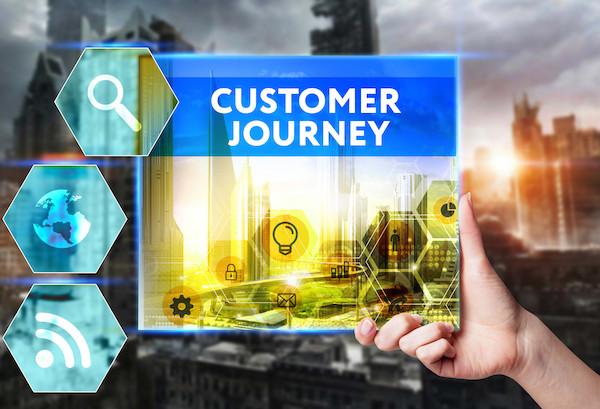Web design is a major component of any business, especially one that operates purely online. Your website’s design impacts your user’s (read: paying customer’s) journey—and that could influence your bottom line, too.
What’s the big deal? If you’re an established business, does this message still apply to you? How does all of this play into the user journey?
The big deal is this—web design sets the first impression for new customers (which is why even older businesses need to consider it), actually aids in your overall SEO strategy, and builds that much-needed trust with your audience. The way users interact with your website, whether good or bad, is called the user journey.
One last thing—your competition is redesigning their website right this moment.
So, how can you improve the customer journey and get ahead? Keep reading.
1. Consider a Chatbot for Automating Contact
Chatbots have almost innumerable benefits to business owners. They truly elevate a webpage, providing convenience that simply isn’t possible without them. They can do work in off-hours, take the place of new hires, and improve your user’s experience.
Some of the cited benefits of chatbots for automating communication include:
- 24-hour service, allowing your users to always get answers
- Instantaneous response (no long wait times!)
- Easy communication and answering of simple, and sometimes complex, questions
These are only a few of many reasons; chatbots present a compelling case.
2. Know User Journey Analytics to Measure
When you’re first starting to consider the user journey, it’s ideal to have some metrics in mind. This information allows you to analyze real numbers and make informed decisions about what to improve (or what to keep the same). Metrics tell you a lot about how your users are interacting with your site.
Google Analytics offers insight into some of their metrics, which include:
- The volume of visits
- The number of unique visitors
- Average time on page per session
- Bounce rate (the user leaves without doing anything)
And so on . . .
Other examples of things to measure include what the landing pages are (homepage? Contact page? Pricing page?) and which specific pages see the most exits.
3. If You Can Afford It, Offer Something
Not every company or ecommerce business can afford to offer something—but if you can, we implore you to consider it. If you can’t, we still might offer the suggestion, as freebies now could benefit you highly in the long run with repeat customers.
A few examples of things to offer include:
- 10% off codes
- Free shipping codes
- Free e-guides or e-books about topics in your industry
- BOGOs
If you’re not compelled yet, consider the fact that 60% of shoppers abandon their carts when they notice extra costs, such as shipping fees. Cover the small cost now to increase revenue later.
Make a User Journey That You’d Want to Experience
When all else fails, simply put yourself in your customer’s shoes.
If they go to your page and find slow loading times, 404 errors, distracting pop-ups, and more (because there’s so much more), they’ll be much more inclined to head somewhere else. That doesn’t reflect well on your business when the user moves on and finds a polished, sleek, and navigable page to deal with instead.
So, place the user journey concept on a pedestal and get to improving!
Click here to learn more about marketing your business in the most effective ways possible.

